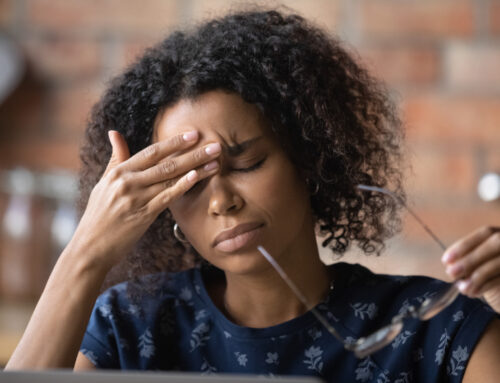There are many different types of headaches, with the most debilitating types probably migraines and cluster headaches. Both types involve sharp pain in the head; however, they have different symptoms and require different treatments. To figure out which one you’re experiencing, you need to get to know these types of head pain, and how to target and treat it.
Migraines:
Migraines are a very specific type of headache characterized by intense and severe pain, and can last from 2 to 72 hours. Migraines can even be “predicted” by some people because it is preceded by visual disturbances (aura) such as flashing lights, zigzag lines, and the like. The following are common signs and symptoms that can accompany migraines:
- Nausea,
- Sensitivity to light or sound (possibly both),
- Spots or flashes of light,
- Temporary vision loss,
- Pain in and around the temples or pain behind one eye, which usually only affects one side of the head (but it’s possible for them to affect both),
- They are usually made worse by physical activity,
- They can cause throbbing pain.
- Common triggers may be alcohol, certain foods, hormones, stress, weather and nerve irritation.
Cluster Headaches
Cluster headaches tend to occur in groups over a period of weeks or months before going away for a while. They are one of the most painful types of headaches, but luckily, also one of the rarest. The following are common signs and symptoms of cluster headaches:
- A classic sign is pain in and around your eye. Typically, symptoms tied to the autonomic nervous system are displayed, like eyelid droop, watery eyes, and a runny or stuffy nose, but usually only on the side that’s experiencing pain.
- Pain may also radiate down your neck, cheek, nose, temple, or shoulder, again, usually just on one side.
- You may also have nausea and sensitivity to light and sound.
- Each cluster headache can last as little as half an hour or as long as several hours, usually appearing at the same time each day and often when you’re sleeping.
- Agitation and restlessness are often experienced –sufferers may need to pace, rock, or move in some way to try to distract themselves from the pain.
Why The Head And Neck Centers Of Excellence?
The first line of defense against a sharp pain in the head or a throbbing pain in back of the head is a good offense. The Head and Neck Centers of Excellence employ a multifaceted approach to get to the root cause of your migraine and cluster. Contact us today for more information.






